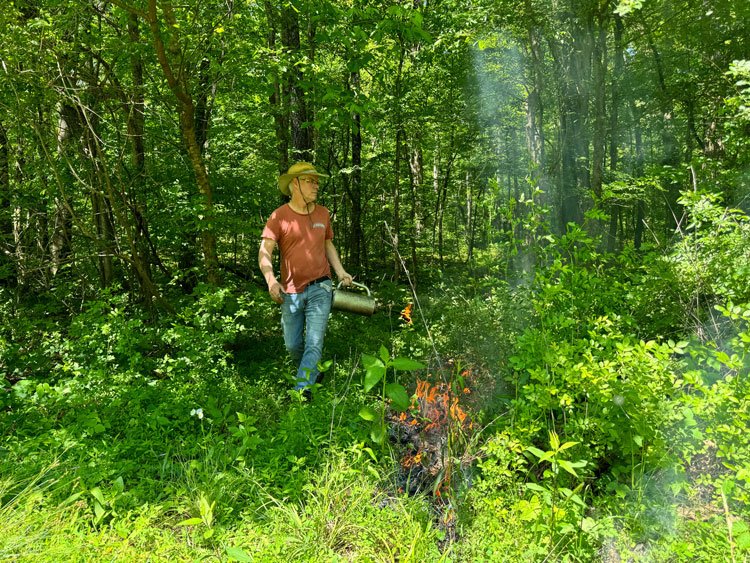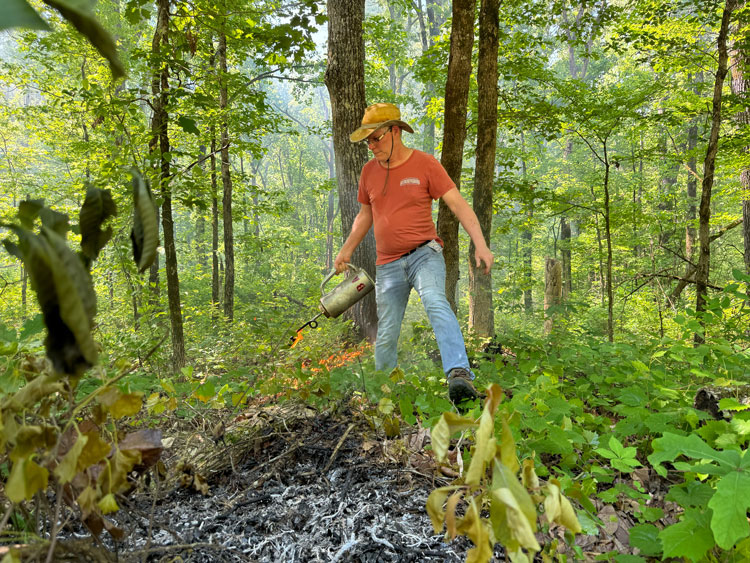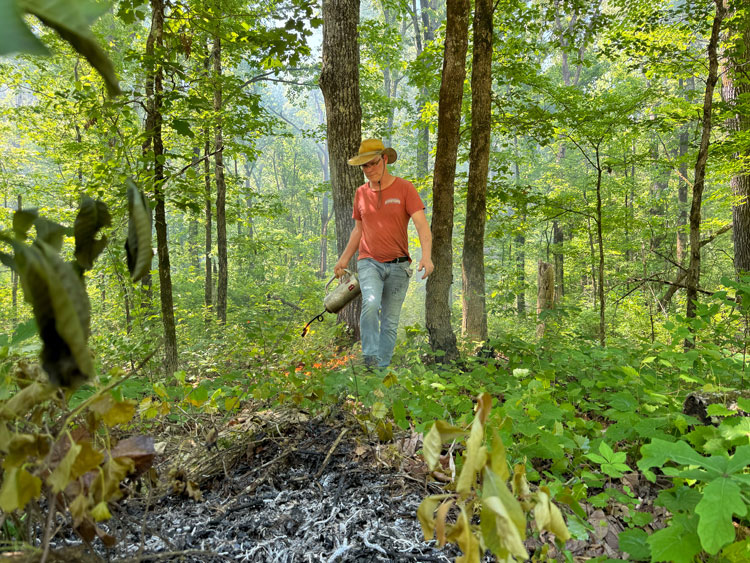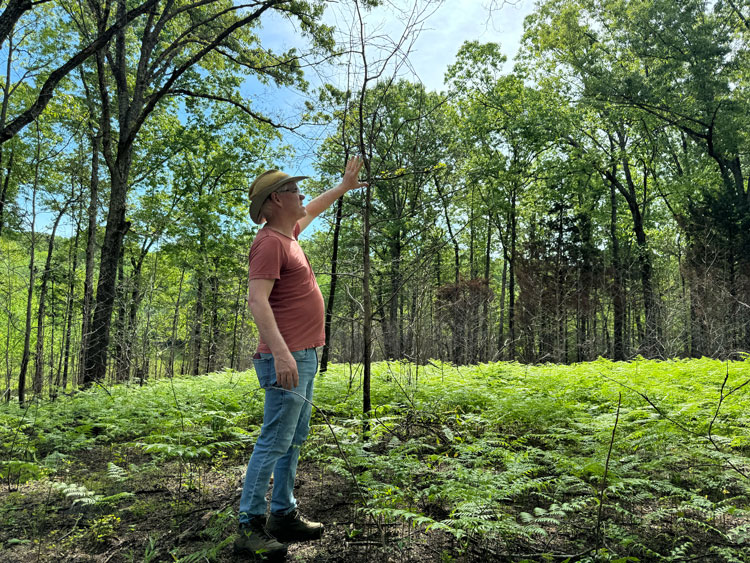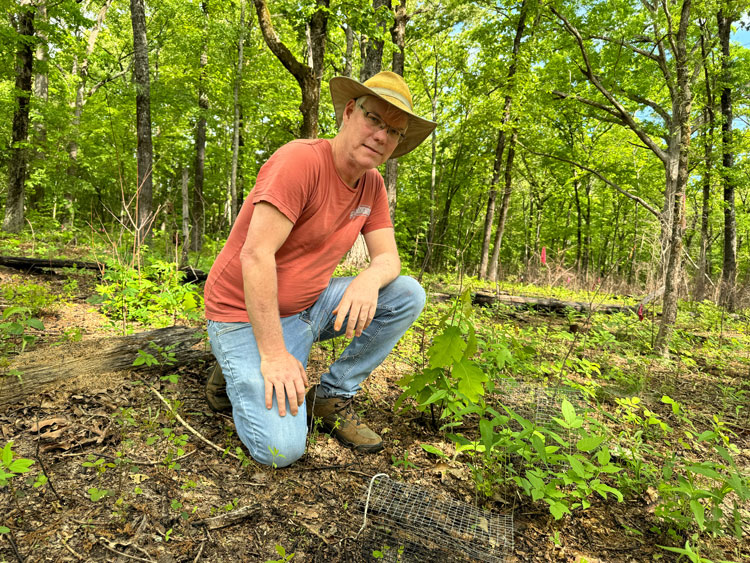
Natural oak regeneration is a dire need for North American forest conservation, University of Mississippi professor says
Oak trees are powerhouses of forest ecosystems in the eastern United States, providing homes to insects and animals, food to herbivores and oxygen for all. But in many areas, the numbers of some species of oaks are declining.
Steven Brewer, a University of Mississippi biology professor, is working to discover why some oaks are disappearing and hopes to find ways to reverse the trend and restore oak forests.
In the March 2024 edition of the journal Forest Ecology and Management, Brewer writes that in fire restoration areas – forests that have undergone prescribed burns – one species, post oak, is regenerating more slowly than other trees and undergrowth, causing their numbers to dwindle.
“Our focus is what’s happening with post oak,” he said. “We want to figure out what’s going on. Why is this happening?”
“We’re learning that when people talk about the fire-oak hypothesis – that oaks need fire to regenerate – they’re generally thinking about what’s needed to go from that seedling to sapling stage. We’re saying there are other factors that influence natural regeneration.”
The plight of the post oak is important because oaks are important, and their loss would weaken North American ecosystems, Brewer said. As a keystone species, oaks support more life forms than any other North American tree and provide home, food and environment to fungi, insects, birds and mammals.
“More insects feed off of oak trees than any other plant in North America,” he said. “This is not just about the trees.”
Brewer’s team conducted its research in a restored oak woodland near Holly Springs. What they found was that post oak – a species usually found along ridgelines and in uplands – is losing ground to lowland and floodplain trees such as maples, sweetgums and white oak.
What is the reason for the change? Not enough fire.
Fire serves an important role in forest ecosystems. It cleans out undergrowth and leaf litter, clears canopies so sunlight can reach the forest floor and encourages biodiversity. Older trees can withstand fire that may shrivel saplings, making the competition for resources less fierce.
Before humans began extinguishing and preventing fires in inhabited areas, occasional fires helped keep lowland trees, including white oak, in the lowlands and post oaks on the ridgeline. Without these occasional burns, however, lowland trees are climbing, and the post oaks are running out of room.
“It’s not so much that we don’t want white oak, maples, or sweetgums; it’s that we don’t want to lose post oak,” he said. “Our worry is, if fire suppression stays in place, post oak would essentially ‘fall off the ridge.'”
Using controlled burns to return fire to the landscape, however, did not solve the problem as effectively as Brewer hoped. Instead, his research indicates that white oak seedlings were more viable – and more plentiful – than those of post oaks.
Invasive grasses also crowd out young post oaks and reduce their survival rates.
“This is the big difference: we have this species (white oak) that was historically down in the floodplains, but it is responding positively to fire suppression and is also responding positively to our restoration of fire,” Brewer said.
“The white oak is making the transition from seed and sapling to small tree. It’s replacing itself. Post oak is doing that too, but not to the same extent.”
Fire-restored woodland that is rich in oak has a greater diversity of plant life, more food for local insect and animal life, and a healthier ecosystem, he said. The goal of Brewer’s research is to re-create these fire-restored oak woodlands across the eastern United States.
“A lot of people don’t understand why anyone would go burn something like this, but it’s important to know why we’re doing this and some of the issues that we are trying to address scientifically,” he said. “We’re trying to come up with better ways of understanding these problems.”
By Clara Turnage
